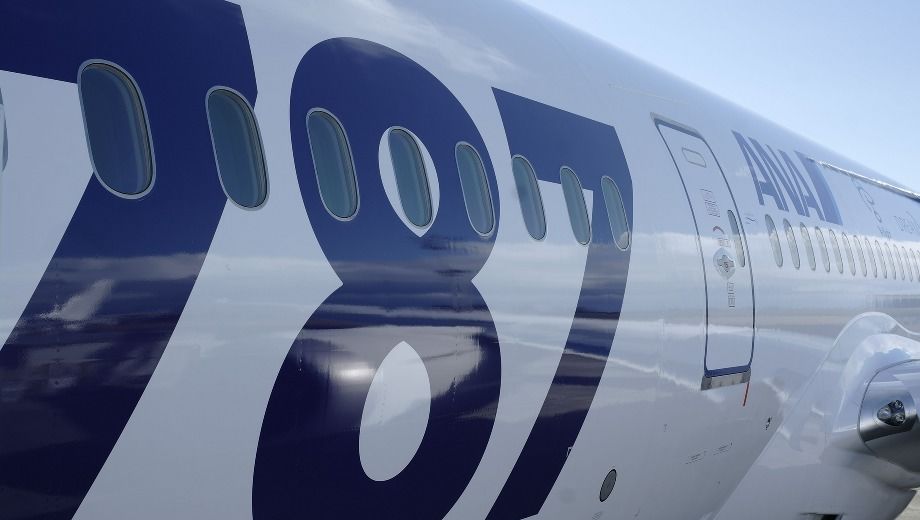Why business travellers will love the Boeing 787 Dreamliner

Yes, it's new and shiny and All Other Things Good – but don’t think that the Boeing 787 Dreamliner is just another plane for getting from A to B.
Boeing has packed a bunch of tricks and technology inside this next-generation jetliner which will make the journey better for business travellers – so you can be more productive (or simply more rested) during the flight and arrive in top shape to hit the ground running.
"The person who flies once or twice a year will likely always be driven by price" admits Boeing 787 programme director Kent Craver, "but corporate travellers seek out the airplane they want to fly on, and they'll seek out the 787 Dreamliner. With everything we've done with the 787, we believe this airplane will become the preferred way to fly for business travellers."
Higher cabin pressure
Most conventional passenger jets set the cabin pressure at an equivalent of around 7,500 to 8,000 feet above sea level, which Boeing claims is the primary cause of a range of in-flight ills.
“There are many passengers problems associated with altitude – headaches, muscle aches, fatigue and even nausea” Craver says.
The difference between external air pressure when an aircraft cruises at 40,000 feet and an internal pressure that’s one-fifth of that stresses the plane’s fuselage – and the greater the difference, the more the stress.
That’s been the limiting factor in increasing cabin pressure, Craver explains: the metal body of current aircraft wouldn’t safely be able to handle the fatigue induced by maintaining this pressure at high altitudes.
That changes due to the use of carbon-fibre composite materials on the 787’s fuselage. Carbon-fibre doesn’t suffer from metal fatigue and in turn allows for lower 'cabin altitude' levels.
The 787’s cabin pressure is set to 6,000 feet, a figure arrived upon by Boeing modifying a pressure chamber to look like an airplane cabin which could hold 12 people at a time.
“We cycled over 500 people through the chamber, and they stayed there for up to 20 hours of simulated flying time” Craver recalls, and they found that 6,000 feet was the ‘sweet spot’.
“Between sea level and 6,000 feet there was almost no difference in the reported symptoms” Craver says, “so we can alleviate or mitigate a lot of symptoms you get at a cabin altitude of 8,000 feet”
Boeing claims that one in four travellers experience some form of ‘respiratory distress’ after flying 12 hours in a conventional aircraft with a cabin pressure of 8,000 feet, but this plummets to 5-6 per cent at 6,000 feet.
Travellers will feel less fatigued, more alert and better able to work en route in the 787 Dreamliner
Higher humidity, fresher air
Also mimicking ground conditions more closely is the Dreamliner’s higher level of humidity compared to today’s aircraft.
This not only reduces complaints of throat and eye irritation, headaches and even occasional dizziness caused by dry air, it can cut down on those post-flight colds which occur when your nasal membranes become too dry to properly filter incoming air.
Air circulating around the cabin is also cleaner due to a two-stage filtration system which removes gaseous molecules emitted by carpets, deodorant systems and even hand wipes.
Partnered with the lower cabin pressure, travellers should feel less fatigued and more active during the flight, plus better on arrival.
Bigger windows with digital tinting
At 46cm (18 inches) tall and 28cm (11 inches) wide, the Dreamliner’s upsized windows – they’re around 40-60% larger than current cut-outs – are not just a creature comfort to afford better views and an increase in natural light inside the cabin.
Electronic window dimming sees the glass go dark at the touch of a button. Cabin crew can set the brightness level of all windows, such as ‘opening’ the windows for landing or dimming them during a flight, although passengers still retain a narrow band of control to make the window around 10% brighter without flooding your seatmates with a harsh burst of light.
Boeing Sky Interior
The modern Boeing Sky Interior cabin design which we’re starting to see on 737-800s from Virgin Australia and Qantas was first designed for the Dreamliner, so passengers will enjoy all the same benefits – such as larger and easier to use luggage bins with more headroom, adjustable LED ‘mood lighting’ and an interior which feels more open and spacious.
Also in AusBT's Boeing 787 Dreamliner coverage
- Qantas plans Boeing 787 from Sydney to Dallas
- Jetstar to run 787 Dreamliner on Auckland-Singapore flights
- Exclusive photo tour: step inside ANA's new Boeing 787 Dreamliner
- Photos and flight report: ANA’s Boeing 787 Dreamliner
- Photos: inside the Boeing 787's funky crew rest 'loft'
- Fan pays $32,700 for seat on first ANA Boeing 787 Dreamliner flight
- Boeing’s 787 nixes first class for business, premium economy
- Light fantastic: the Boeing 787’s digital window tinting
- So when will Qantas have the Boeing 787?
- Boeing chooses Android for 787 Dreamliner's entertainment system
- United aims for first Boeing 787 Dreamliner flights by mid-2012





Hi Guest, join in the discussion on Why business travellers will love the Boeing 787 Dreamliner